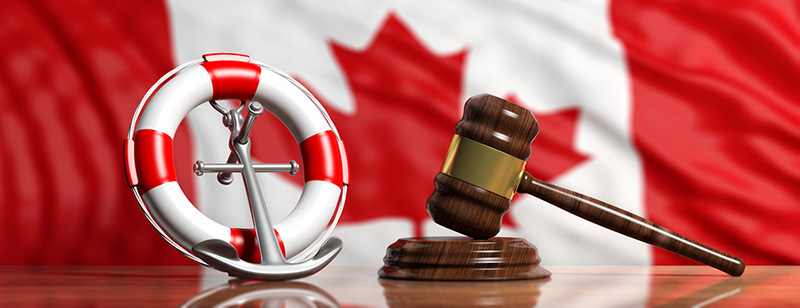Under the Canada Shipping Act, 2001 all waterborne craft that use Canadian waters should be registered and licensed. The same rules apply as when buying a new build. The only difference is that as a second-hand vessel, your craft comes with a history and documentation. Mainly, it is just a question of transferring the title or ownership. Most of the boat ownership and registration documentation should already have been completed by the previous owner and should be handed over on purchase. You fill out the forms, which can be downloaded electronically, adding your details, pay the fee and wait approximately five working days for your application to be processed. Alternatively, some applications can be made by post. Nowadays, with the drive for more efficiency, some paper applications are not available. Remember, postal applications will take much longer.
The Optimum Solution
The obvious way is to check this out online on the government site under Transport Canada Boat Transfer. There you will find the relevant information. However, there is an easier solution. New owners of a second hand boat can do all they need at www.Canadianvesselregistry.ca. They are maritime documentation experts who know precisely which type of licence and registration you need and what information is necessary to fill out the forms. Unfortunately, the slightest error on a form or a missing piece of documentation will stop or delay your application, and you may even have to start the process over again. Government agencies are unforgiving in this respect, so it is better to get it right the first time.

Intended Use of Your Vessel
Applications for registration and licensing depend on to what use you intend to put your recently acquired boat. There are two basic types of craft; pleasure and commercial. Each has their own registration and documentation requirements. A transfer of ownership request implies that the craft has already been owned and therefore registered previously. Pleasure craft applications are relatively simple: here is a quick summary of what is required.
- Owner Information
Necessary information includes name, address, telephone number etc. Essentially, the same information that you would have to submit for almost anything. All this is public record type information.
- Vessel Information
This deals with the vessel itself and requires technical information on the dimensions of the craft i.e. tonnage, length, width, and hull depth, and the materials of construction. The method of propulsion, whether or not it is powered by sail or motor and size of the engine in terms of horsepower will also need to be stated. Of course, all of this information should be readily available in the paperwork that is passed on by the previous owner.
- Previous Owner Information
This will be basically the same type of public record information that you also have to supply.
The Transport Canada boat transfer forms state which is required information and supporting documents are necessary. These will include your proof of ownership, which is covered by a bill of sale or receipt of purchase, a piece of official identification issued by the Canadian government (driving license, passport, etc.), and a full length, sideways view, colour photograph of the vessel.
Warning
You will be informed in the case of any missing documentation and will be expected to respond promptly. Along with the notice, an online address will be included so that the missing documents can be uploaded as soon as possible. After two warnings, if you haven’t responded, your application will become void, and you will have to start the whole process once again. Those of you that are very occupied or aren’t very good at filling out official forms, it would be better to seek help from a company that deals with maritime documentation daily.
Commercial Craft
Commercial craft come under another set of maritime regulations. As a second-hand vessel, it must already be registered on the Canadian Registry of Vessels. This applies to ships that exceed 15 gross tonnes and have more than a ten horsepower or 7.5 kW capacity motor. Craft such as these fall under the Small Vessel Transfer of Ownership category and will require a much more detailed and in-depth type of application. Ownership of commercial vessels may be held by a company or corporation or various individuals and can turn into a bureaucratic nightmare, depending on whether or not it is domestic or foreign built and other factors.
Word of Advice
One way of lining up all the required documentation on a vessel before making applications is to do some historical research on the craft which can be done on the Ship Registration Computer System Database. All you need is its official number or the vessel name. Any craft registered from 1984 will be on the database. Vessels registered before 1984 are on microfilm.

